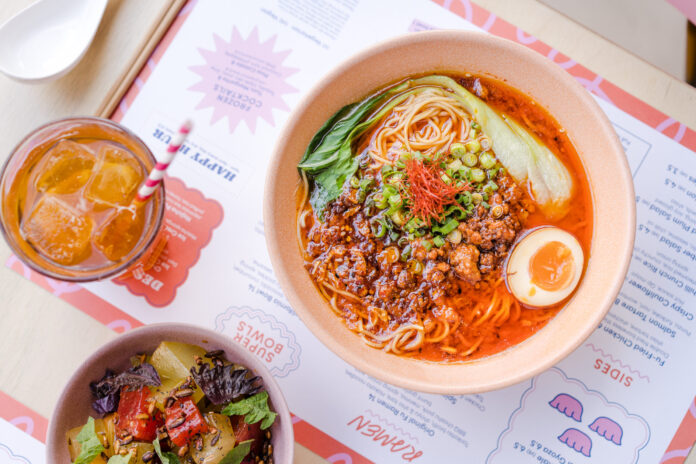Welcome to Bordeaux, France’s undisputed wine capital and arguably the world’s most coveted destination for serious oenophiles. This UNESCO World Heritage region produces more fine wine than anywhere else on earth, from legendary Left Bank Cabernet blends to ethereal Right Bank Merlots that have been making collectors weep tears of joy (and bankruptcy) for centuries.
But here’s the thing about Bordeaux that might surprise you: it wasn’t always known for its culinary prowess. For decades, this world-famous wine region survived on a handful of decent bistros and not much else. Before the mid-2010s, even serious oenophiles would joke about Bordeaux’s lackluster food scene – all that incredible wine and nowhere decent to pair it with dinner.
That changed around 2014. Château owners finally recognised what Napa Valley figured out years earlier: people who can afford great wine expect great food to match. The region’s châteaux began opening serious restaurants that could match the caliber of their cellars. The result has been a dining renaissance that’s transformed wine country visits from simple tastings into complete gastronomic experiences.
Today, Bordeaux boasts over 10 Michelin-starred establishments, with new stars awarded annually. Yep, Bordeaux wine holidays are so much more than appreciating the bouquet and quaffing the nectar of the gods, they are about gastronomic adventure too. With this in mind, here are some of the best vineyard restaurants in Bordeaux…
La Grand’Vigne at Château Smith Haut Lafitte
Ideal for special occasions that justify the splurge…
Let’s get the obvious out of the way: this place isn’t cheap. But Nicolas Masse’s two-Michelin-starred restaurant sits in an 18th-century orangery overlooking a lake where swans paddle about, clearly aware they’re part of the show. The setting alone justifies some of the cost.
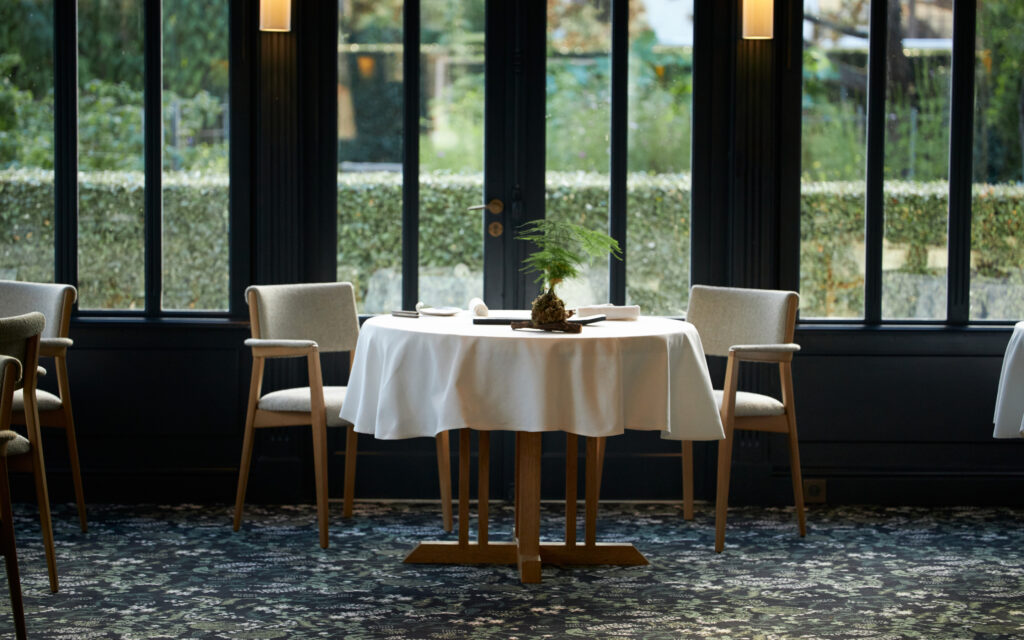
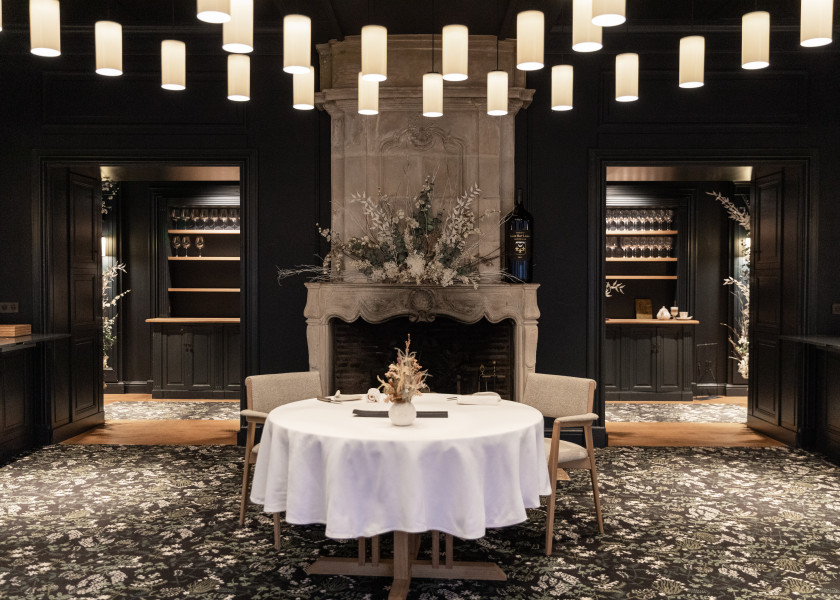
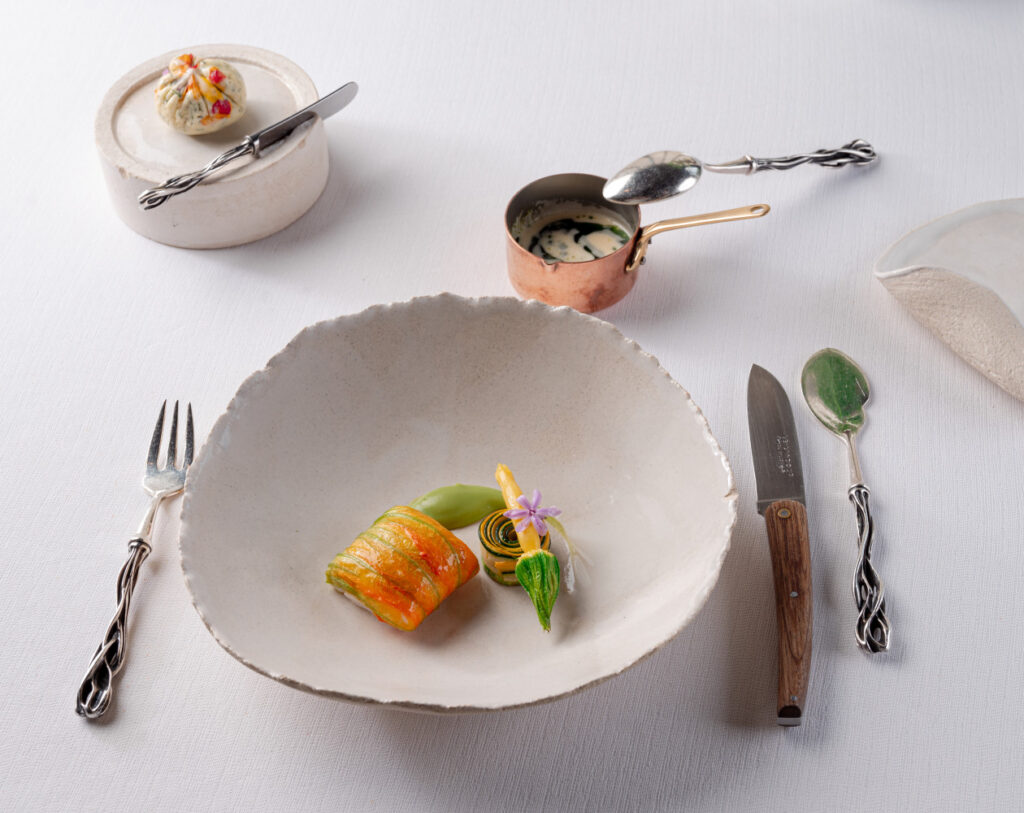
Masse’s approach centres on what he calls “enhancing with profound respect the essence of the product, without altering it” – which sounds a bit much until you taste his work. Take his ‘Between Land and Sea’ – a line-caught hake wrapped in zucchini with vintage white wine basil sauce. The fish’s delicate texture remains intact while the sauce adds complexity without masking anything. His playful ‘vegetable caviar’ tartlet combines garden peas, local goat cheese, and premium caviar in perfect springtime harmony.
The wine program showcases Pessac-Léognan at its finest, where even house wines would star elsewhere. Sommelier Aurélien Farrouil might suggest the estate’s crystalline 2021 blanc or their complex 2020 rouge. Watching sunset through orangery windows with perfectly aged Graves feels close to perfect.
Website: sources-hotels.com
Restaurant Lalique at Château Lafaurie-Peyraguey
Ideal for those who appreciate theatrical dining done well…
The 120 golden crystal Sémillon leaves hanging from the ceiling could overwhelm, but when Jérôme Schilling cooks (a Meilleur Ouvrier de France trained with Robuchon) the setting enhances rather than distracts.
This is Sauternes country, and Schilling calls himself a “cuisinier des vignes,” basing dishes around specific vintages. In his recent spring menu his ‘Interpretation of vintage 1929’ pairs sweet potato candied in Sauternes with apples and black tea – it’s a dish to be remembered. Another standout creation features turbot with wild fennel and a delicate Sauternes-infused dressing, showcasing the wine’s versatility beyond dessert pairings.
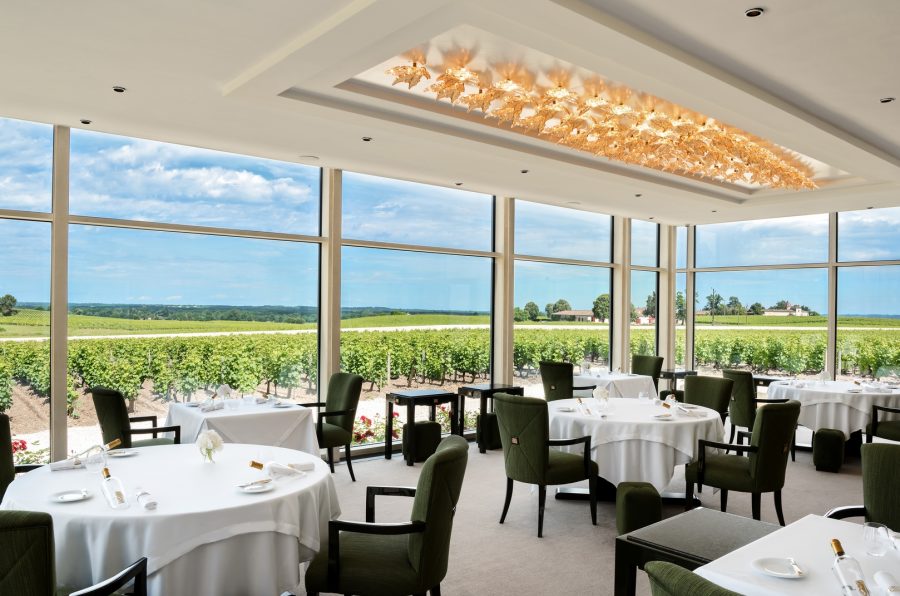
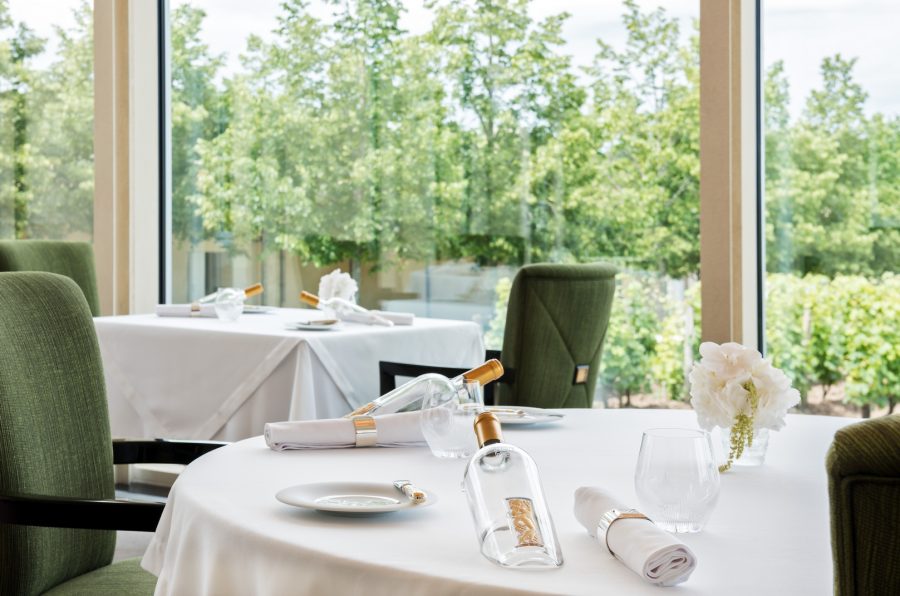
Head sommelier Adrien Cascio uses Sauternes as both accompaniment and ingredient, even crystallising wine for seasoning. Try the renowned ‘Sweet’ Z’ cocktail which is an aperitif created and trademarked by Château Lafaurie-Peyraguey – it’s made up of made up of a young vintage of Sauternes over ice with fresh orange zest and is quite simply, delicious.
Two Michelin stars come with the expected price tag – dinner runs €220-260. They close Tuesdays and Wednesdays (presumably to polish all that crystal). But sitting in this 17th-century château, watching light play through Lalique stemware while contemplating how wine becomes art, justifies the expense.
Website: lafauriepeyragueylalique.com
Les Belles Perdrix at Château Troplong Mondot
Ideal for diners who care about sustainability without compromising on quality
Perched above Saint-Émilion with panoramic views, this glass-walled space feels like dining in the clouds. David Charrier holds both a Michelin star and a Green star, recognition for both culinary excellence and environmental responsibility.

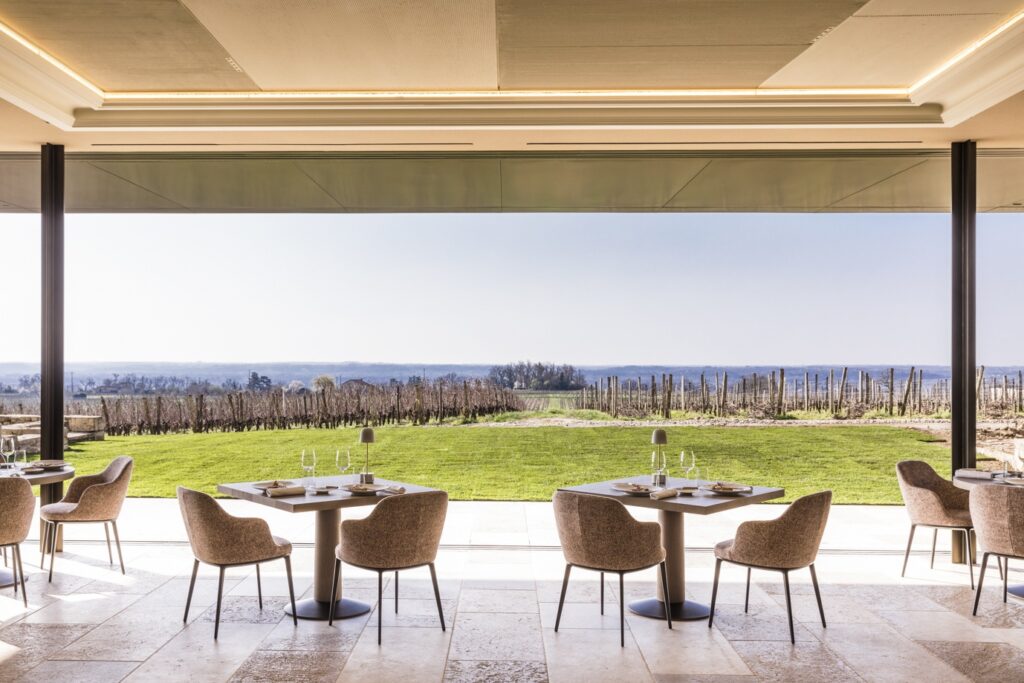

Designed by interior architect Bruno Moinard, the main restaurant is simply stunning with huge bi folding windows that overlook the vineyard. It’s an impressive setup, but the real story is Charrier’s obsession with their permaculture gardens. The vegetables that end up on your plate have been grown just outside, and you can taste the difference.
On a previous visit standouts included bouchot mussels elevated with seafood jelly, saffron, chanterelles, and Mexican tarragon chiffonade. His veal tartare with oscietra caviar and smoked eel demonstrates technical mastery in unexpected combinations.
Being a Premier Grand Cru Classé estate, the wine list predictably impresses, though lunch at €58 represents exceptional value for Michelin-starred dining. The house Troplong Mondot 2019, with its dense concentration of dark fruit and mineral complexity, pairs brilliantly with Charrier’s more robust preparations, while their estate rosé – produced primarily for the restaurant – offers a refreshing copper-colored companion to lighter dishes with its dry profile and subtle red berry notes.
Website: troplong-mondot.com
La Terrasse Rouge at Château La Dominique
Ideal for architecture enthusiasts who happen to eat…
Jean Nouvel built a red translucent cube on top of a wine cellar, visible from neighbouring Château Cheval Blanc. If that doesn’t grab your attention, nothing will. This isn’t just about Instagram opportunities, though the photos you’ll get are pretty special.
Nicolas Lascombes runs an upscale bistro that feels both destination-worthy and approachable. His duck breast in red wine with summer berries hits all the right notes without overcomplicating. Sometimes the best dishes are the simplest done perfectly.
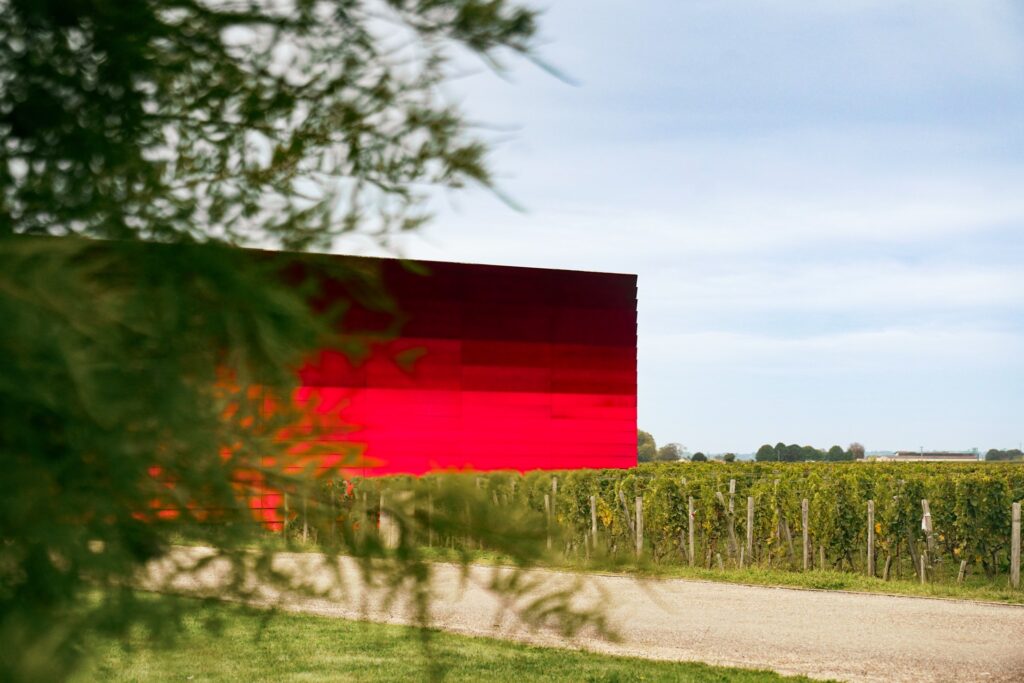
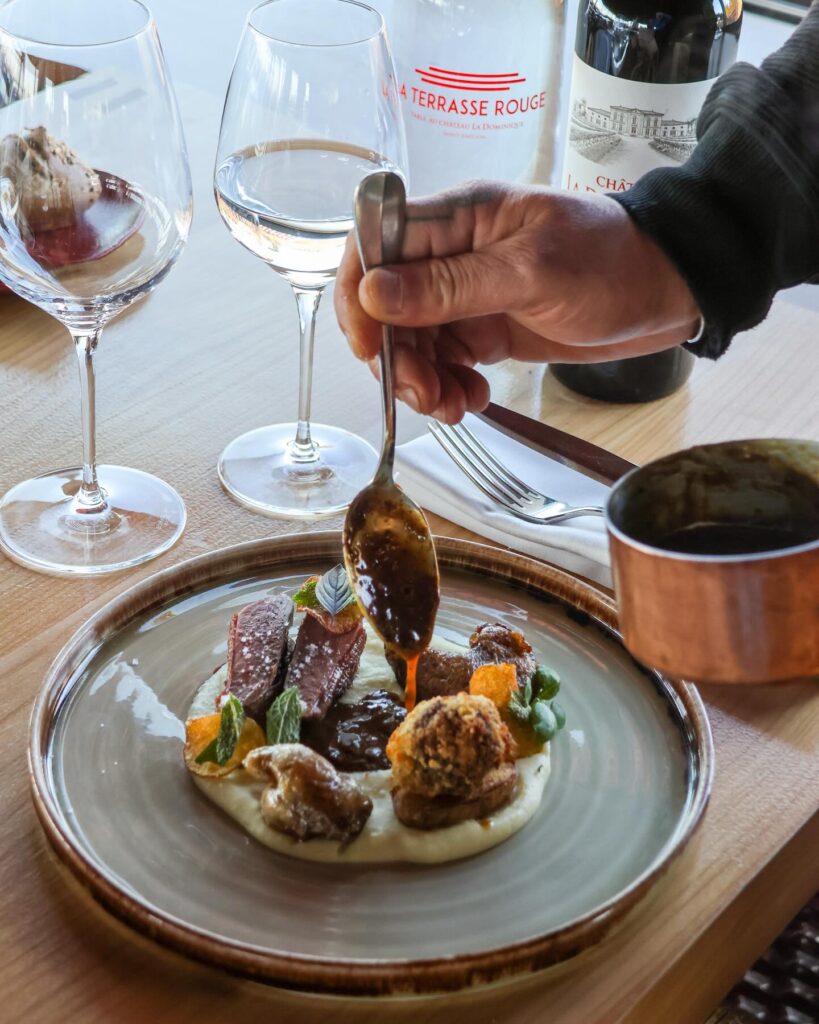
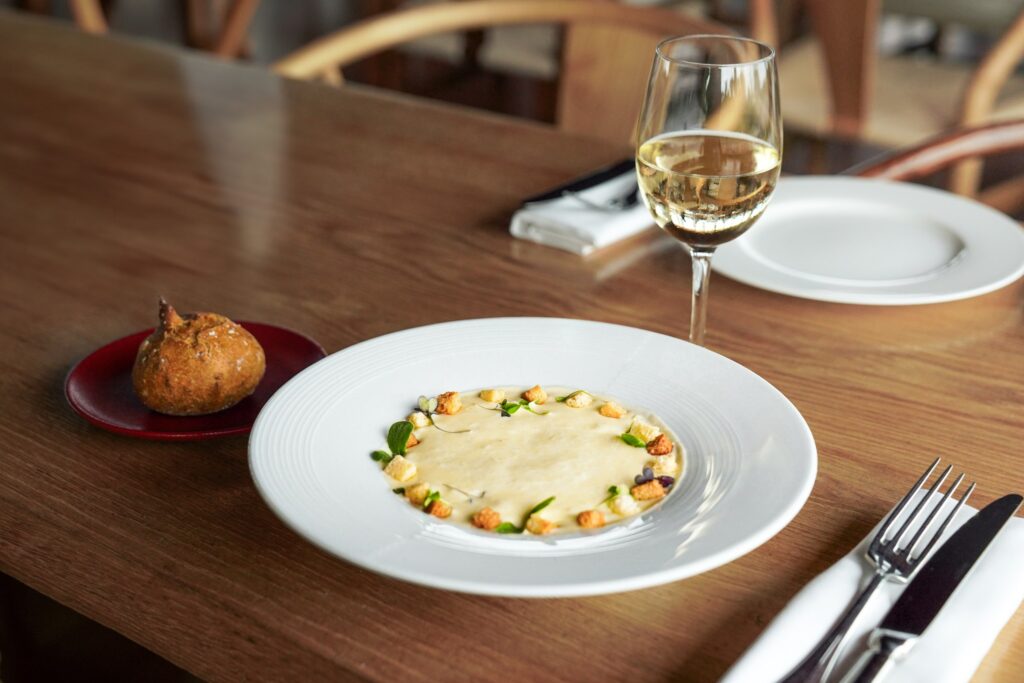
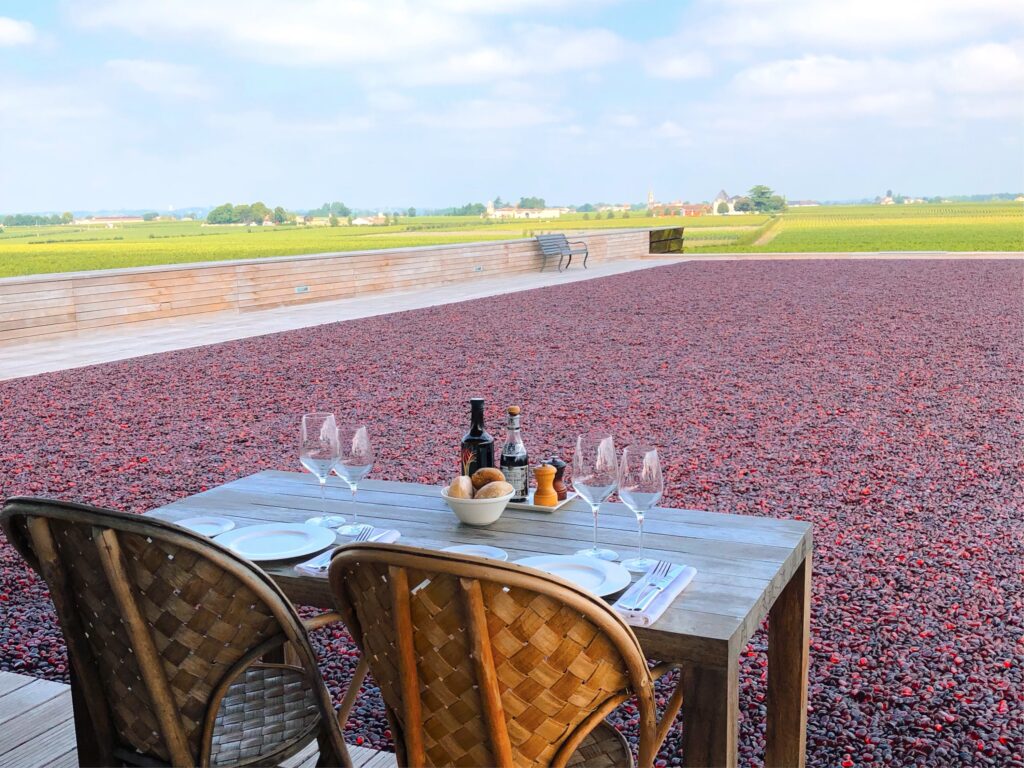
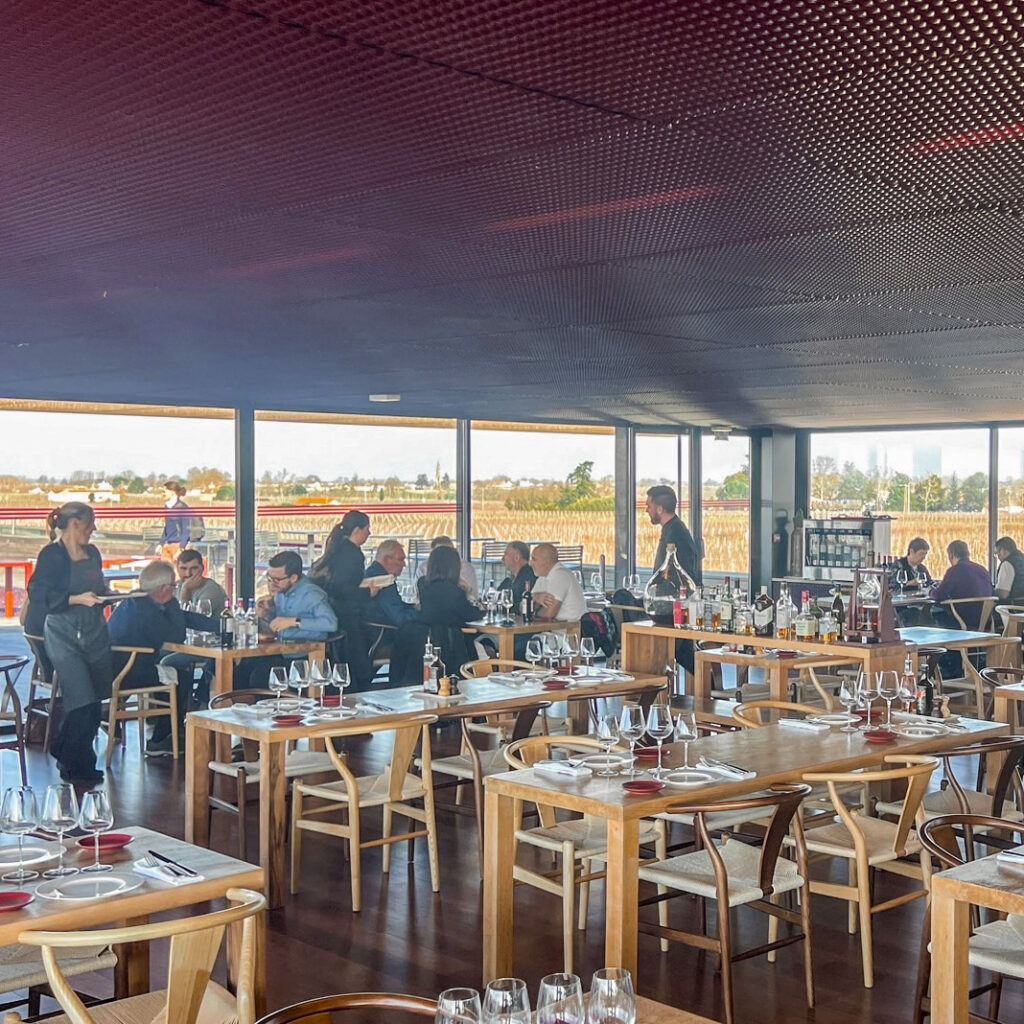
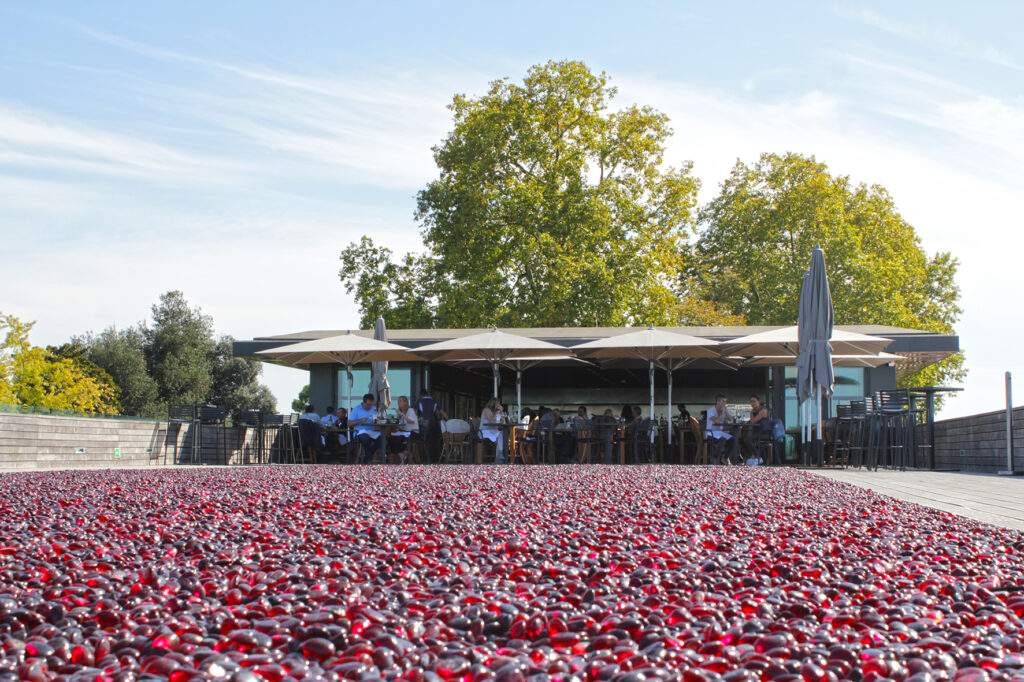
The 180-degree views are genuinely stunning. You’re dining above some of the world’s most valuable agricultural land, watching light change over Cheval Blanc and Figeac while tucking into Périgord truffles. It’s hard not to feel privileged to be here.
The wine list runs to 250 selections, focusing on Right Bank appellations as you’d expect. The staff know their stuff without being pompous about it – they’ll guide you through the options like knowledgeable friends rather than lecturing professors.
Open daily for lunch and Friday-Saturday for dinner, it’s more accessible than many château restaurants. The pricing won’t require major financial planning, which is refreshing in this neighbourhood. Sitting in that Nouvel-designed space, watching sunset paint the vines the same crimson as your surroundings, you’ll understand why architecture and wine work so well together.
Website: laterrasserouge.com
Le Manège at Château Léognan
Ideal for romantic dinners that won’t require a second mortgage…
Fifteen minutes from Bordeaux city, this converted 19th-century stable offers more romance than most places manage with twice the effort. Flora Mikula, who also runs a successful Paris restaurant, has transformed these old stables into something special.
The equine history feels authentic rather than forced – these really were stables, and that past gives the space character. The wood-paneled dining room creates intimacy, but it’s the terrace overlooking vineyards and forest that’ll have you planning return visits.

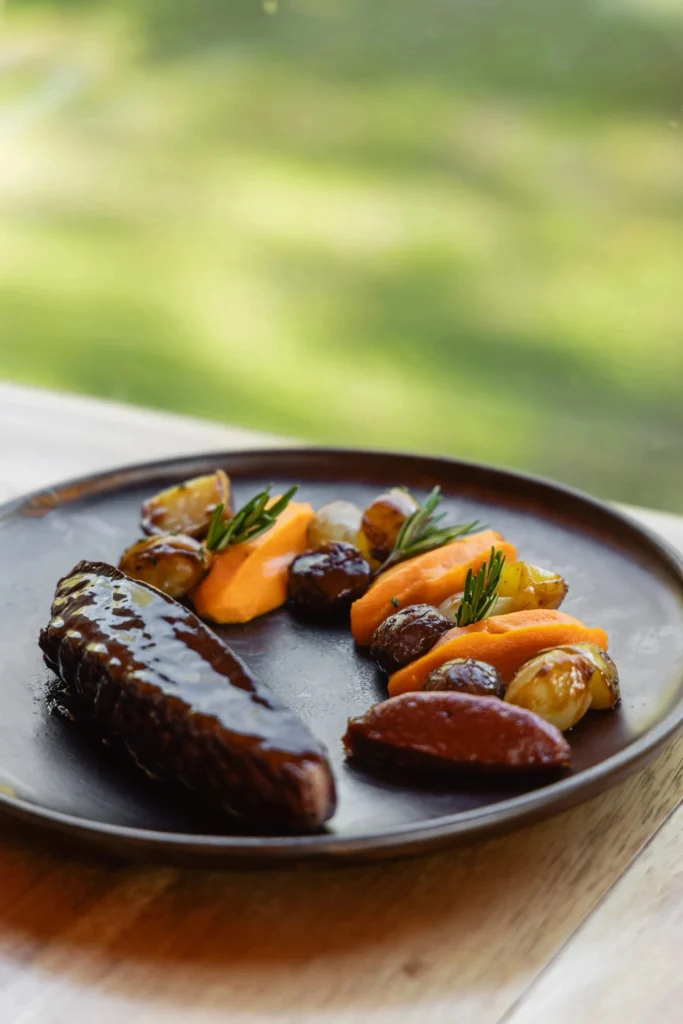

Chef Robin Bos works magic that makes even the most expensive dish at €49 feel like a bargain. The pan-fried foie gras cooked with château wine is textbook perfect, while the beef tenderloin smoked with estate vine shoots adds theatre without gimmicks. Don’t miss the floating island dessert – it’s elegant and surprising.
The wine program focuses on Graves and Pessac-Léognan, reading like regional greatest hits with prices that won’t shock. All in all, Le Manège proves you don’t need celebrity chefs or Michelin stars to create something memorable – sometimes a converted stable, forest views, and honest cooking provide all the magic required.
Website: chateauleognan.com
La Chapelle at Château Guiraud
Ideal for those seeking authentic Sauternes terroir in sacred surroundings…
This historic Sauternes estate houses La Chapelle in a beautifully renovated 18th-century chapel. The sacred setting provides an almost mystical backdrop for discovering some of the world’s greatest dessert wines paired with cuisine emphasising local and organic ingredients.
Chef Yoann Amado, who also runs the Le Cercle Guiraud gastronomic restaurant in the village of Sauternes where his food unapologetically inspired by the Sauternes, also runs the helm at La Chapelle. Here, his bistronomic approach honours the rhythms of the seasons, showcasing local ingredients with particular emphasis on the organic bounty cultivated within Château Guiraud’s own gardens.

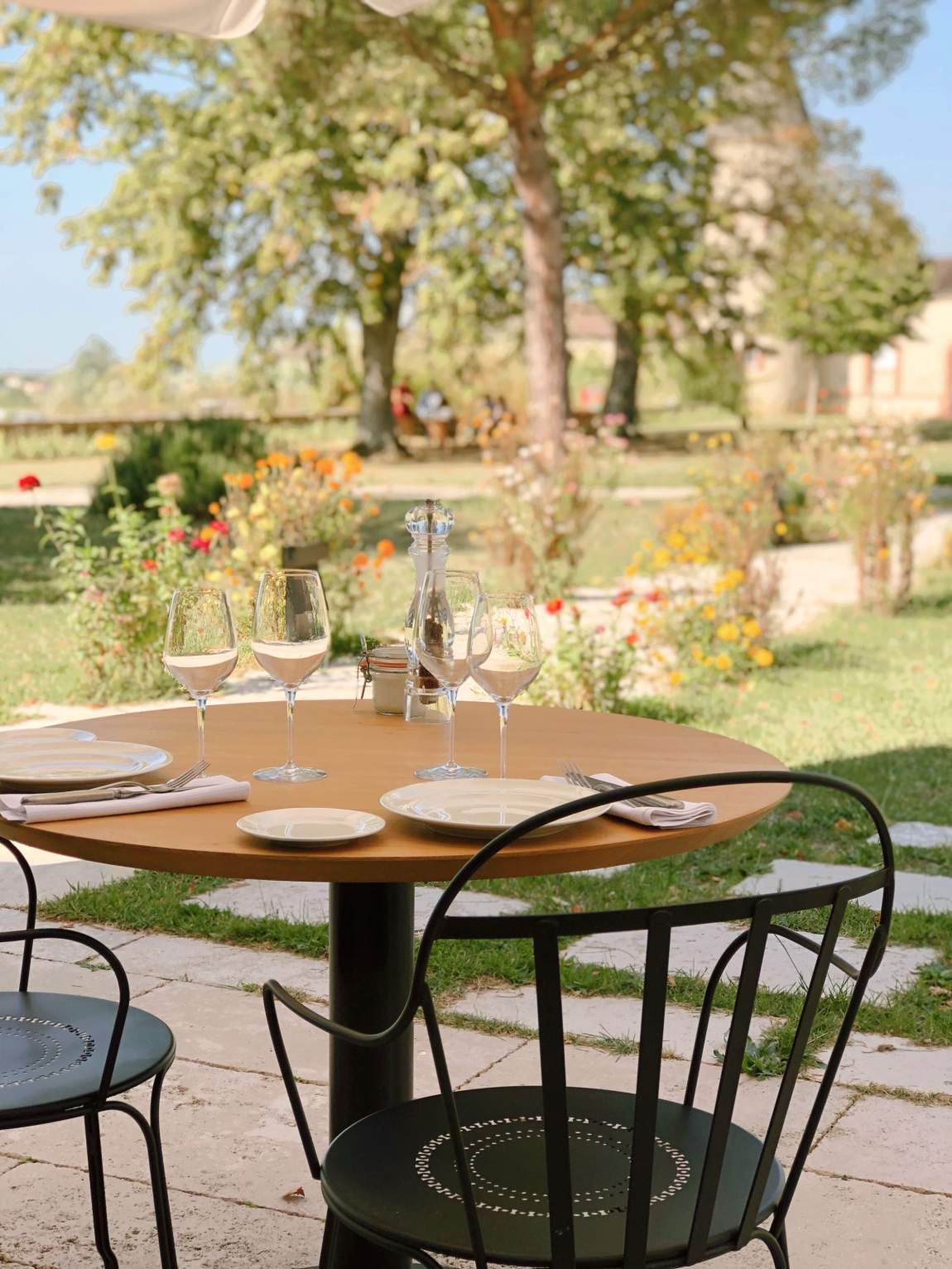
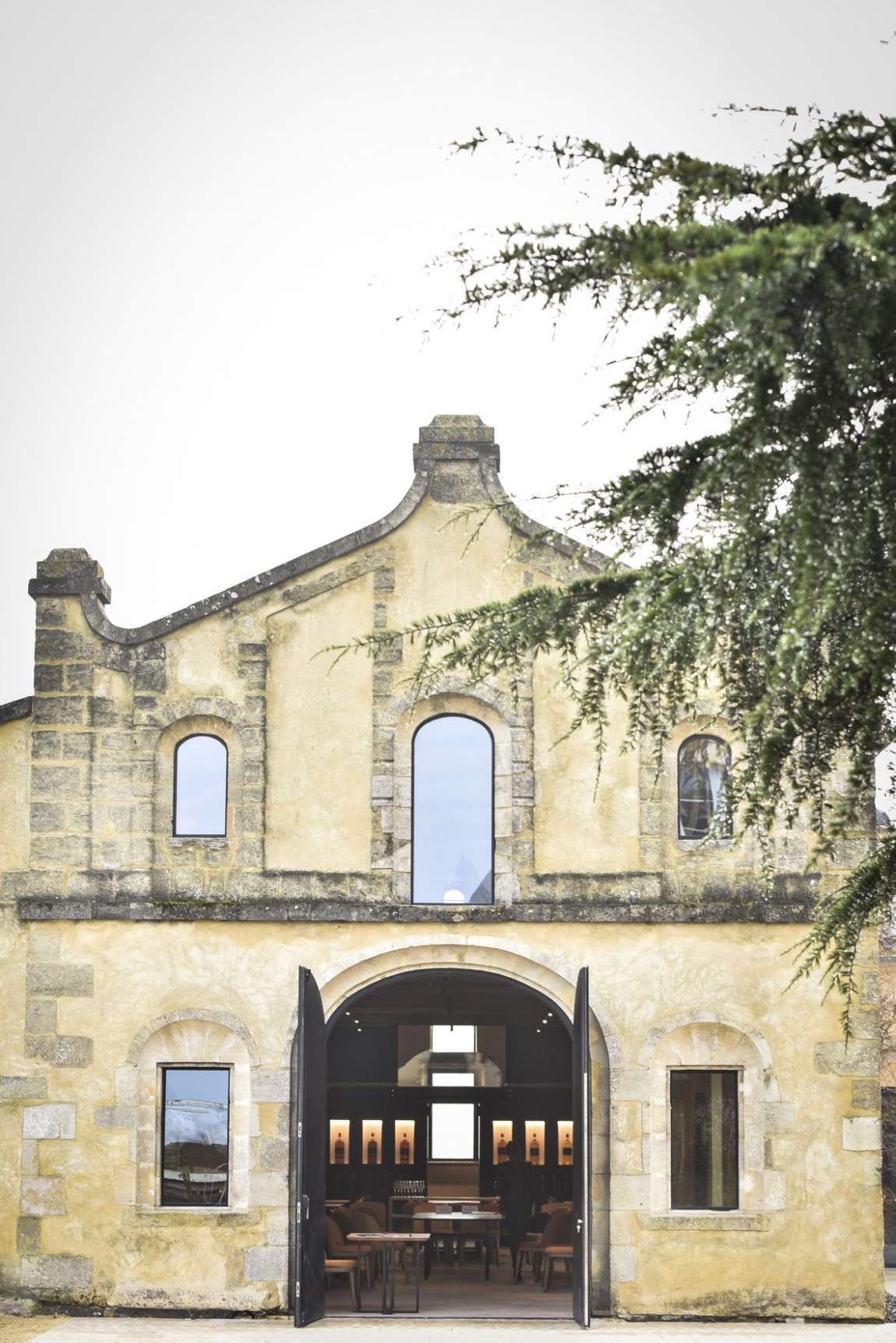
The menu captures South-West perfumes with seasonal produce that complements their renowned sweet wines. A dish of poached egg and a sauternes sauce surprises. Dining in the lofty, consecrated space while contemplating the alchemy that transforms noble rot into liquid gold feels appropriately reverent – if you ask us (that’s why your here isn’t it?) it captures the spiritual aspect of great winemaking.
Website: chateauguiraud.com
Cordeillan-Bages Restaurant at Château Cordeillan-Bages
Ideal for serious wine lovers who want access to legendary bottles…
The Cazes family’s 17th-century charterhouse in Pauillac houses what might be France’s most impressive wine cellar – 1,800 references that earned a Top 18 ranking nationally. That’s not just a wine list; it’s a library of liquid history.
The gastronomic restaurant operates with precision but maintains warmth. The current chef brings southwestern French techniques to local ingredients with the kind of refinement that makes simple preparations shine – perhaps Médoc lamb with garlic confit and thyme jus, or line-caught sole from nearby Arcachon paired with seasonal vegetables from local producers. This is sophisticated French cooking at its finest.
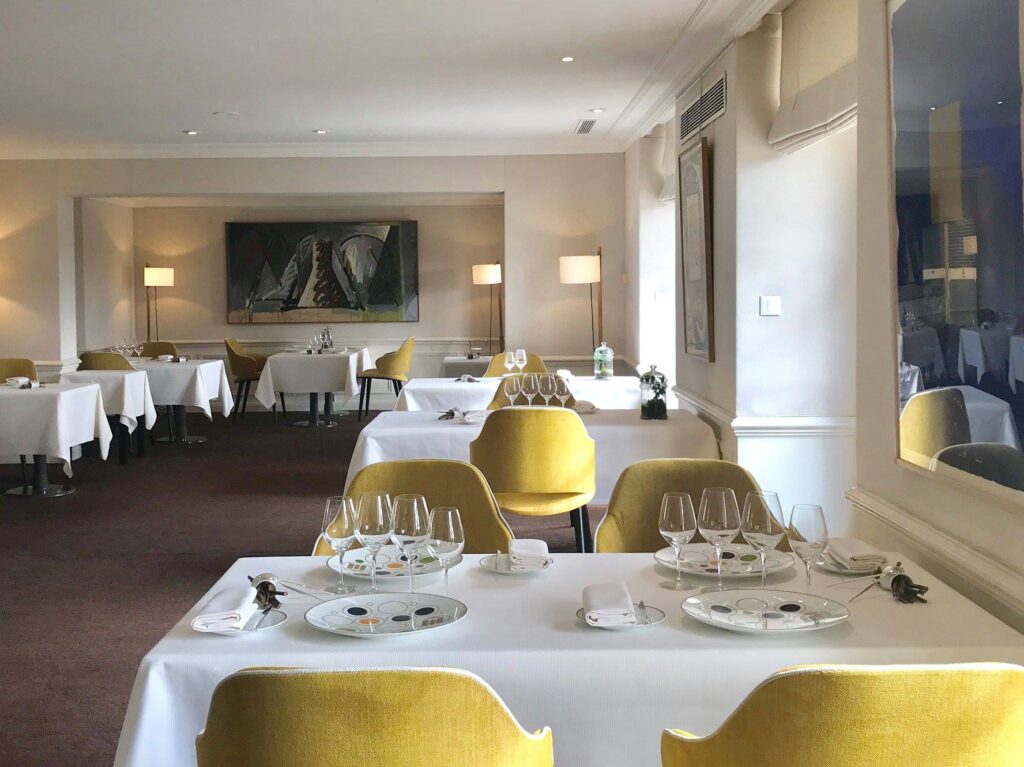

Head sommelier Arnaud Le Saux presides over that biblical collection with genuine enthusiasm. Want 1982 Latour with your lamb? He’s got options. The proximity to Lynch-Bages means their house wines would be premium selections elsewhere.
Fair warning: The restaurant closed from November to March, which is either civilised or frustrating depending on when you’re visiting. But catching them in season, settling into those comfortable chairs for an evening exploring Médoc wines, explains why serious oenophiles make pilgrimages here. The attached Café Lavinal offers year-round dining for those who miss the main season.
Website: cordeillanbages.com
L’Atelier de Candale at Château de Candale
Ideal for believers in organic farming…
Saint-Émilion’s first vineyard restaurant (opening in 2012) sits above the Dordogne valley with views that make estate agents weep. Being first sometimes means being best, and L’Atelier de Candale proves the point.
Chef Renaud Bernadet runs the kind of kitchen where ‘market menu’ means he was actually at the market that morning, probably debating which fish looked freshest. The daily-changing menu could be frustrating if it wasn’t so consistently good – local seafood, meats from Saint-Denis-de-Pile, cheeses from Libourne. It’s farm-to-table without the preaching.
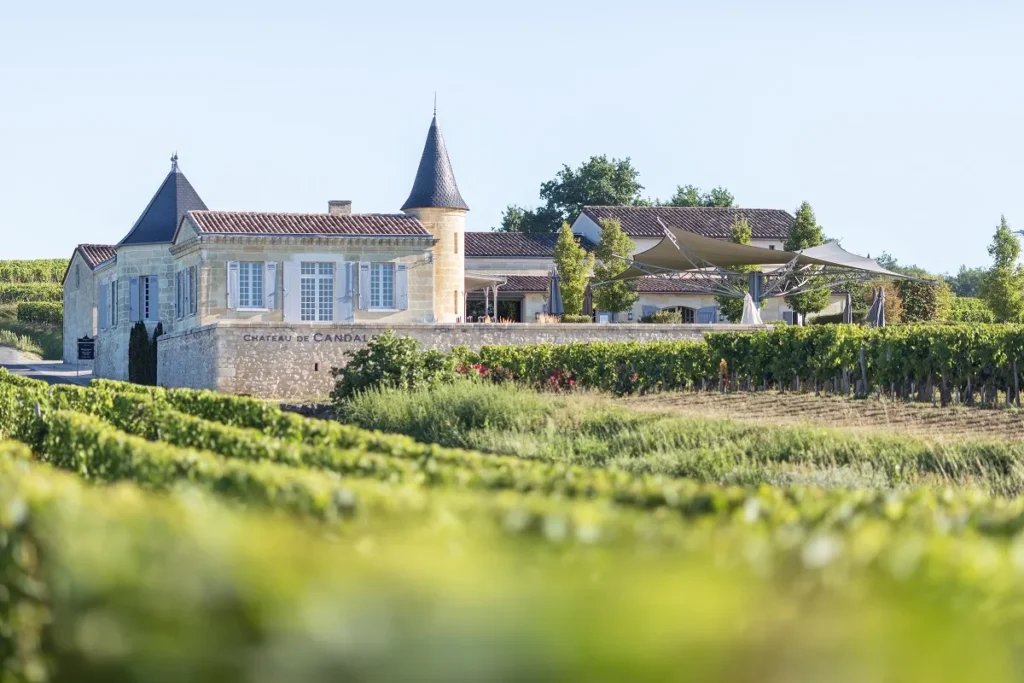
The vineyard’s conversion to organic farming is commendable and pricing feels generous – €28-38 for lunch seems like they forgot a digit. The brasero cooking option adds entertainment, though watching sunset over the Dordogne valleys provides plenty of that already. They offer various tasting experiences, from simple pours to full prestige visits.
Website: vins-saint-emilion.com
La Table de Pavie (Hôtel de Pavie)
Ideal for experiencing world-class cuisine with legendary wines…
While not directly on the vineyard, we couldn’t not mention this one. The highly-regarded La Table de Pavie operates from Hôtel de Pavie, maintaining close associations with prestigious Château Pavie. Chef Yannick Alléno, holder of multiple Michelin stars, showcases local Aquitaine products with expertise that made him one of France’s most celebrated chefs.

The restaurant provides rare opportunity to pair Alléno’s sophisticated cuisine with Saint-Émilion and Bordeaux wines, including access to mature vintages from Château Pavie’s legendary cellars. The combination represents fine dining at its pinnacle.
Alléno’s approach respects local ingredients while applying techniques refined in his other Michelin-starred establishments. The wine program naturally emphasises Saint-Émilion, offering chances to taste legendary vintages in their spiritual home.
Website: hoteldepavie.com
The Bottom Line
These vineyard restaurants represent Bordeaux’s evolution from a region known solely for wine to a complete gastronomic destination. Each offers a different perspective on how great wine and exceptional cuisine enhance each other, creating experiences that linger in memory long after the last glass is drained.



